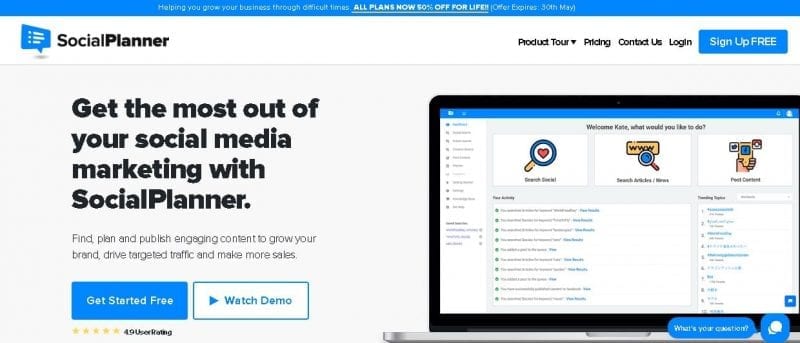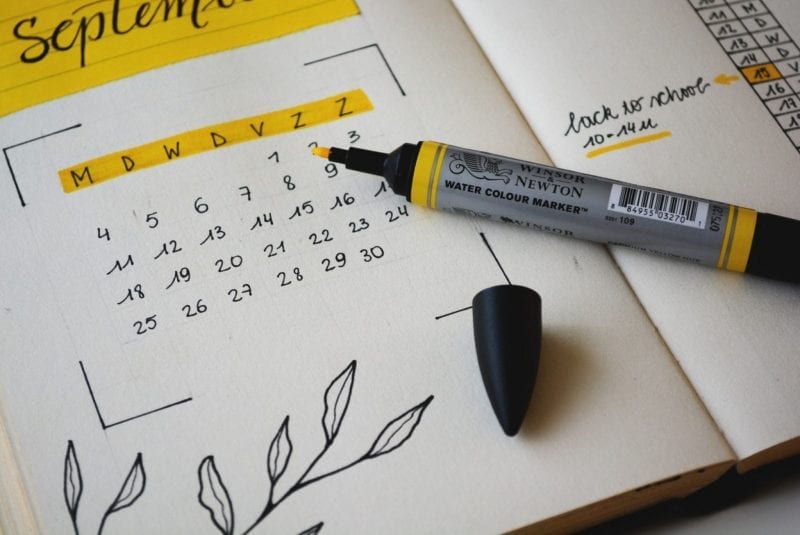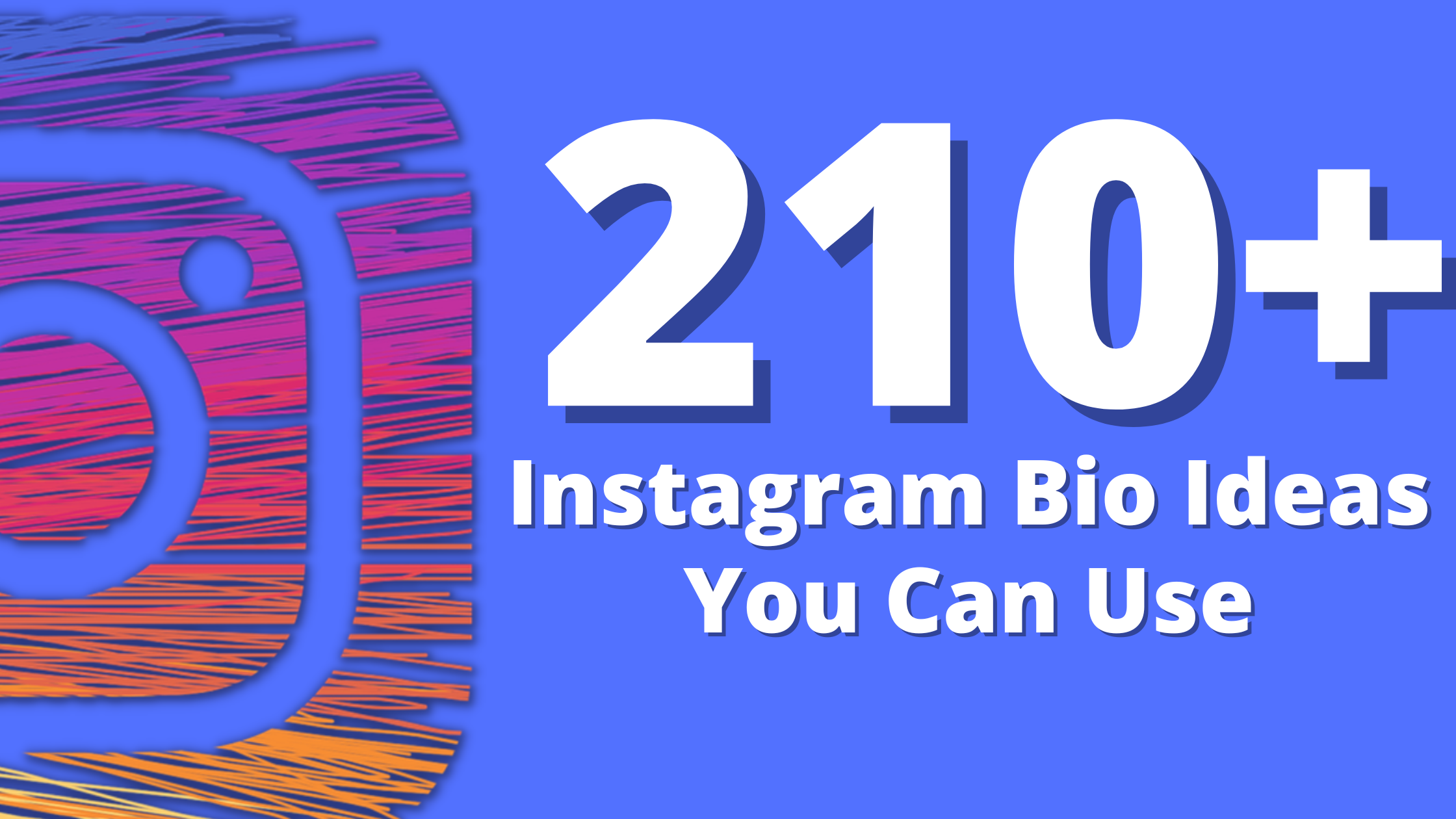Marketing Plan – Creating A Strategy That Will Reap Rewards
Starting your marketing plan can be a daunting and exciting task – you are fired up and eager but where do you start? Well, that’s why you’re here. We will give you guidance and show you how to create a marketing strategy that will give you great results.
You should tackle your marketing plan in a step-by-step fashion, ticking off your finished tasks as you move along your list. Use our guideline to create the perfect social media marketing campaign for your brand/company.
Marketing Plan Start – Decide On Social Platforms
You need to know exactly which social media networks you will be using. They are all very different and need different approaches. A strategy that will work miracles on one network may not work at all on another. There are certain practices and styles that apply to each network. Also, every social media network has its own audience. Do intensive research about the social media platforms that you will be incorporating into your marketing plan.
It is not necessary for you to be active on all the social media networks at your disposal. Focus on the networks that matter to your audience and your brand. That way, you can create more quality content. Quality over quantity, always. Make sure that the networks you decide on will help achieve your goals.
Here are a couple of things to consider when you choose which social platforms to use and which to avoid:
Resources
Do you have a team that works with you? What skills do you and your team have? Many social media networks are all about visuals, do you have the right resources to create high-quality visual content? Does your marketing plan consider the resources?
Audience
Do you already have an idea of your target audience? Where do they ‘hang out’? You need to know which social media platforms are the most used by your audience so you can easily reach them. For example, 67% of Instagram users are between the ages of 18 and 29. LinkedIn, on the other hand, has more than 60% users who are between 25 and 34.
Time
How much time do you have to devote to a social network? You need to have at least one hour a day that you can spend on each network. That is if you want to achieve the best results. At least, this amount of time is necessary when you start out. After you’ve got everything sorted and have a momentum going, you can use a tool such as SocialPlanner. It can help you find great content and schedule when to share it, among other things.

Marketing Plan – Second Phase
Once you have determined which social media platforms you will be incorporating into your marketing plan, you need to give them personality. You have to fill out your profiles completely to make sure all the information followers could ever need is there. You should have high-quality profile photos and they should be very similar on all platforms. If you’re using your logo, be sure that the logo isn’t cropped or stretched when used in the different sizes required for profile photos.
Your cover photos need to be captivating and uniform – if you’re using a certain theme, try to stick to that theme on all your social networks. Your bios should be informative and interesting. With completed profiles, you will show the world that your brand is professional and cohesive. This kind of approach should be taken in all aspects of your marketing plan.
The language you use in your profiles is also very important. Use words that matter to your audience and don’t be shy to use keywords. As long as you use them organically, of course. Your tone should be fresh and try not to use buzzwords – they can create the wrong impression or go ‘out of style’ really quickly. Above all, be approachable and likeable while maintaining a stylish and professional air.
The Third Phase of Your Marketing Plan – Establishing Voice And Tone
Before you jump in and start creating content to share, you need to find the perfect tone and voice for your brand. You need to keep this similar across all platforms so users can more easily identify with your brand.
It is suggested that at this point in your marketing plan, you spend time building marketing personas. Go into serious detail with this and get to know your customer base. There are some questions you can ask that will help you get this phase finished quicker.
What kind of personality should your brand have? How should people perceive the company? What kind of relationship will your brand have with users? Will it serve as a friend, a teacher, a coach etc? How similar is your voice and tone to that of your competition? How can you stand out?
Use adjectives to describe your brand and build a tone and voice around that. Remember: your ‘voice’ is your mission statement and your ‘tone’ is the implementation of that mission. Create a voice that will entertain and please your audience. Make them want to see more content and support your brand.
Fourth Phase Of Your Marketing Plan – Posting Strategy
You have to be very active on social media to be seen – millions of people are using these platforms every day. Having a posting strategy will help you keep tabs on when and what you post. This way, you can be sure you’re making the most of the platforms that you are using.
How much you post and when you post depends on the social media platform in question. It isn’t the same for all of them.

When To Post
You should be posting when your target audience is online, so do your homework with this. With that said, we’ll give you a basic guideline of when to post on which social media networks. We suggest that you experiment with the times and then check out the analytics on the platforms after a while. You’ll be able to learn a lot from those results. Meanwhile, get started by posting at the following (Eastern) times:
- Facebook – Between 1 pm and 4 pm during the week
- Twitter – Between 1 pm and 3 pm on weekdays
- Instagram – Between 5 pm and 6 pm on weekdays
- LinkedIn – Between 7 am and 8:30 am and 5 pm to 6 pm On Tuesdays, Wednesdays and Thursdays
- Tumblr – Between 7 pm and 10 pm on Monday to Thursday and 4 pm on Fridays
- Pinterest – Between 2 pm and 4 pm and 11 pm during weekdays as well as weekends
How Often Should You Post?
This depends on your marketing plan but could differ from one platform to the next. You should experiment with this as well, but to start off with, you can follow the below suggestions.
- Facebook – Once or twice a day
- Twitter – Three to ten times a day
- Instagram – Once or twice a day (you can post Instagram Stories too, between eight and sixteen Stories
- LinkedIn – Once or twice a day
- Tumblr – One to three times a day
- Pinterest – Five to ten times a day
This is just a guideline so you can play with the recommendations.
What Should You Post?
Again, this depends on the platform that you are using. For Twitter, brand announcements, industry news and memes are a good idea. Sharing links to your blogs is also a great idea.
On Facebook, company news, ‘TGIF’ posts and themed content are suggested to keep people interested. If you need inspiration for Instagram, reposts from fans and followers, polls and quotes often do really well. When posting on LinkedIn, blog posts and videos are good content ideas. Tumblr is great for posting questions directed at your fans and followers. You can also explore popular tags to see what’s trending and share content based on that. Pinterest is a visual platform, so sharing images that catch the eye is the best way to go here.
In general, videos make for great content wherever you share it. With that said, you shouldn’t just share random videos. Nothing you do on social media should be without purpose or intent.
Marketing Plan Phase Five – Analyze And Test
At this point, you should be getting ready to see how your marketing strategy has performed so far. You should have shared a number of posts and have much analytics to work with. Most social media networks offer analytics tools that can give you insight into how your posts have performed.
If you feel that isn’t enough to give you a clear picture, you can rope in the help of analytics tools such as Keyhole and Agorapulse. With their help, you’ll have a breakdown of how impressive your posts were.
Marketing Plan Tip – How To Track Your Performance
There are ways to make sure that you get the most done with your marketing plan. Before you kick-off your strategy, set a benchmark to work towards. After about a month of posting, go back to your benchmark and see if you’ve achieved it. Did you get the number of clicks, shares and comments that you hoped for? If not, why did you not achieve that goal? Your benchmarks can be adjusted as you meet and surpass them.
Test out new ideas and do so often. You may be wary of trying new things when you’re still starting out with your marketing plan, but consider it once you’ve got enough confidence. Try out live videos and brainstorm ideas that are fresh and new. Then, check your analytics. Which ideas worked? Compare the results to that of your original marketing plan. Does adding new content enhance your original content?
You will learn a lot from working on this kind of plan.
Phase Six Of Your Marketing Plan – Automate And Engage
It is recommended that you have a system that you can follow to stay on top of updates on your posts. This will also help you to engage with your brand’s community.
To start with, automate posting of your social media content. We mentioned earlier that you can use a tool such as SocialPlanner. Plan your content and schedule it – the best way to have consistent content is to use this kind of tool. But this isn’t all you should be doing. You need to engage with your audience.
If you get approached by social media users or have comments, react to them. Follow up on conversations and don’t ignore any attention given to your brand. It is important to keep reaching out to your audience. Build relationships and you’ll find that your brand loyalty will grow.
After you have finished these phases, your marketing plan should be starting to show results. However, there are even more tips that we can share with you. Use everything we share here and work it into a marketing plan that is tweaked and adjusted to your specific needs. By incorporating many different ideas, you can build a better and more effective strategy.
More Marketing Plan Suggestions
The above-mentioned recommendations showed you how to set out your marketing plan. Now, we’ll help you to give more flesh to that plan.
Research Your Competition
It is very likely that your competition is already making use of social media. This is not a bad thing – you can learn a lot from what they are doing, and what they are not doing. Of course, copying what your competition does is not a good idea – your audience will notice. They may even call you out for it. Examine what your competition does, how they do it and how their followers react to it. You’d be surprised by how much knowledge you could pick up this way!
Do Competitive Analysis
This kind of analysis will help you to understand who your competition really is. You will see what they are succeeding at, and where it is that they are failing. You will get a clearer picture of what is expected in your industry, and knowing this is very important and useful.
In addition, this analysis will help you to easier spot new opportunities. You may find that your competition is neglecting one social media network, and you can use it to your advantage.
Do Some Social Listening
This is another way to keep tabs on your competition. You can track the accounts of your competition and industry keywords. You’ll be able to find out which posts and campaigns reap the most rewards and which aren’t really worth the effort. Work what you learn here into your marketing plan and see how it aligns to your goals and ideas.
Engage In A Social Media Audit
This is something you can do once you’ve been using your social media networks for a while. Take a few days to really look at what you’ve been doing and how it has worked or failed.
You will have to ask some hard questions and give honest answers. Ask yourself (or your team) what has worked, and what hasn’t. Who is connecting with your brand on social media? Why? Why are others not connecting or reaching out? How does your presence compare to that of your competition’s? Are you using the right social media networks to reach your audience?
When you have truthful answers to these questions, you will have a better idea of your performance and how well your marketing plan is working. Then you can work on improving everything that does not satisfy you.
Something that you should be looking out for is impostor accounts. These are fraudulent accounts that are using your company name or names of your products. They can harm your brand’s reputation if they’re sharing false information. If you find any such accounts, report them immediately. It is a good idea to get your accounts verified so you can have better authority. Followers will also know they’re dealing with the real you.
Marketing Plan Tips – A Few Extra Considerations
When you are creating your marketing plan or strategy, remember that there are a few things to keep in mind. Your goals have to be specific, relevant, attainable, measurable and time-bound. If they’re not, you are going to have a really tough time staying on top of tracking your progress and success.
Speaking of tracking your progress…
Track All The Insightful Metrics
Although it is easy to get carried away when you see that your content is getting a lot of likes or retweets, that is not the important metrics you should get excited about. Proving their value isn’t as easy.
Instead, you should be looking at the following metrics to have a more precise idea of the success rate of your marketing plan:
Brand Awareness
This is how much attention your brand gets across all your social media networks during a certain time. This is determined by the impressions and shares your accounts enjoy. There are tools that can help you measure your brand awareness and it is suggested that you make use of them. The best way to make sure that you’re on the right track to getting great brand awareness is to be consistent.
Your Reach
It is important that you measure how many people actually see your content and if you’re reaching your target audience. This is something that will be affected by your marketing plan. Are you sharing your content when your audience is online? Are they finding value in what you share? You can keep an eye on this metric with analytics.
You can measure the reach and then divide that by the number of followers you have. Then, multiply that number by 100 and you’ll have your post reach percentage. From Facebook, there is a ‘When Your Fans Are Online’ feature that is quite handy in giving you the best time to post.
Your Potential Reach
This refers to how many people could see your content. For example, if one of your followers shared your content, about 2% to 5% of that person’s followers could be reached. You need to be aware of this kind of potential because the point of your marketing plan is to reach more people. You can calculate your progress by keeping tabs on potential reach as well.
Use a monitoring tool to find out how many brand mentions you got in a specific amount of time. Take note of the number of followers that saw the mention, this would be the audience that saw the account that mentioned you. You can multiply those two numbers to calculate your ‘Theoretical Reach’. Your potential reach is between 2% and 5% of that theoretical reach.
Audience
You should measure your audience growth rate as well to see how your marketing plan is doing. This growth shows how quickly you are getting new followers. It is easy to be blinded by how many people followed you during a certain time, but you should be looking at how quickly you gained followers. Was it faster than your competition?
You can track your audience growth rate by measuring your new net followers on every platform over a certain time. Then, divide this by your total audience on the platforms and multiply the answer by 100. Now, you have your audience growth rate percentage. You can use this same method to track the success of your competition.
You should be learning everything you can about your audience. Of course, if you created personas, you may already know all you need to. Or you think you do. There is never a point at which you can stop learning.
John Wooden said: “It’s what you learn after you know it all that counts.” We should never stop learning. Knowing your audience is something that you will likely never stop focusing on. People change, and your audience can change as well. If you continue to learn about your audience, you will be able to turn followers into actual customers.

Marketing Plan For Audience Growth
There are several ways to grow your audience and doing so is the point of a good social media marketing campaign. If you’re audience ever stops growing, you are in trouble. Here’s how to keep things growing.
Focus On Buyer/Audience Personas
You probably know by now how important your personas are. They allow you to think of your potential followers and fans as real people who have wants and needs. This will let you think more clearly about what your company/brand needs to offer them. You will have more satisfaction from your audience, which is always a good thing.
Collect Real-World Data
It is dangerous to be a marketer and make assumptions. You could be right, but you could also be very wrong. That is why it is recommended that you gather real data so you can build a proper marketing plan around reality.
Make use of social media analytics to get access to valuable information about who your brand’s followers are. Find out where they live, the languages they speak and how they interact with you. This is all-important insights that will help you build a more successful marketing plan.
Be Inspired
Finding inspiration from others is one way to learn and there is absolutely nothing wrong with it. Even master painters and talented musicians are inspired when they see or hear another artist’s work. You can draw inspiration from other brands that are doing well on social media.
Do case studies of successful brands (not only your competition) and find out what they did so very right. You can use what you learn to adjust your goals and improve your own marketing plan.
One way to discover successful campaigns is to take a look at the winners of The Facebook Awards and The Shorty Awards that honour the best content creators and producers on social media.
Examples
MoonPie on Twitter
Throughout 2019, MoonPie entertained Twitter users with funny and consistent content. They did it so well that the media took notice. Their success shows just how important a unique brand voice can be. MoonPie added unique personality to their campaign, and it paid off.
I’m an artist now lol pic.twitter.com/yHQia26v53
— MoonPie MoonMate (@MoonPie) December 8, 2019
Dove – Show Us
The beauty brand has always been about being natural and with their Project #ShowUs they got women from 39 countries involved. The campaign was centred around getting rid of stereotypes and was successful because women felt like their voices were heard.
Follow The Brands That Inspire You
You can keep an eye on what the ‘big guys’ are doing by following them on social media. It is suggested that you follow the brands who are dominating in your industry. This way, you can be on top of what they’re doing but also create more brand awareness when your audience sees you engaging with the brands. Leave comments and likes on the posts of everyone who inspire you.
What Do Successful Brands Have In Common?
There are some similarities that you will pick up on when you study the accounts of the brands that really succeed at social media marketing. You will see that they have a consistent style, voice and tone. That is why we say it so often – consistency is important! It gives people an idea of what to expect and sparks brand loyalty.
More Things To Do To Improve Your Marketing Plan
Consult Your Followers
You would be surprised by the insight that consumers have to offer. But there is hardly any better place to get accurate information than from your target audience. You could ask your followers what they want from your brand. But make sure that you actually use what people give you or they’ll feel like you’re only asking to look good.
Schedules Are Good
Many social media managers are able to manage multiple social media accounts and make the most of them. But with the busy and demanding lives that we live these days, having a tool to make things easier is a good idea. A social media scheduler like SocialPlanner is a really great way to keep on top of things. In addition to planning and sharing posts on time, SocialPlanner will also help you find trending and interesting content.
If you’re using a scheduler, you’ll find it much easier to focus more on creating high-quality content. You won’t have to stress about being awake or around to share content when your audience is online – the scheduler will do that for you.
Have A Good Balance Of Content
While social media networks such as Instagram are very visual, you should balance the type of content you share. You need to share copy as well as audio, images and video. A good balance will be much more effective in the long run.
Decide What Your Content Must Achieve
If you know exactly what it is you want your content to do for you, you’ll have a better chance of achieving your goals. Decide beforehand what you need to happen.
For example, you can decide that half of your content will be focused on driving content to your blog, 25% of it is about supporting lead generation and selling, 20% is curated content from other sources and 5% is about creating a human side to your brand by showing off company culture. Of course, how you divide your content depends on your brand’s goals.
Marketing Plan Note
Use different goals for your different social media networks. Also, use different measurement tools for your various marketing strategies. For example, engagement can be measured with organic social posts but brand awareness is calculated from social campaigns (paid and unpaid).
As a social media marketer, you will likely be busy with many different goals at one time, and keeping tabs on them can be difficult but is important. Your goals on all platforms and channels should be aligned with your marketing plan. This way, the value of your hard work will be easier to see.
Conclusion
There you have it – the best ways to build a strong and effective marketing plan. You can use all the information shared with you, or only draw inspiration from some of it. For even more information, check out our blog. We love sharing insightful and interesting guides with people who are as passionate about social media marketing as we are.




